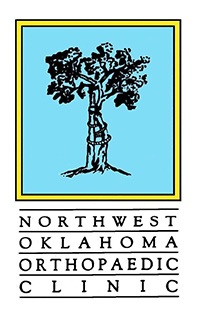Conditions
Hip Adductor Injuries
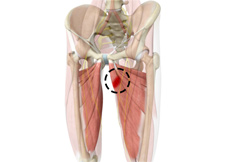
Hip adductors are the group of muscles on the inner side of your thigh that enable adduction or the ability to bring the thighs together.
Pediatric Femur Fracture
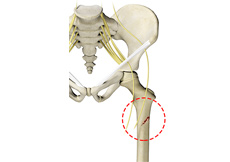
The femur or thighbone is the largest and strongest bone in the human body. Pediatric thighbone fractures can occur when your child falls hard on the ground and gets hit during sports, automobile accidents and child abuse. In a thighbone fracture, the broken bones may be aligned or displaced.
Stress Fractures of the Hip
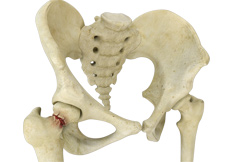
Stress fractures of the hip are a break in the upper part of the thigh bone (femur) that fits into the socket of the hip joint. It can occur in any part of the hip, however, it mostly occurs just below the ball of the ball-and-socket hip joint called the femoral neck.
Avulsion Fractures of the Pelvis
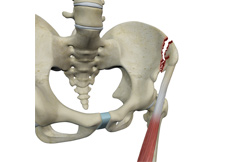
Avulsion fractures of the pelvis is an injury that occurs when a tendon or ligament pulls off a piece of bone from the hip. This results in a part of the pelvic (hip) bone breaking away from the main part of the bone.
Hip Injury
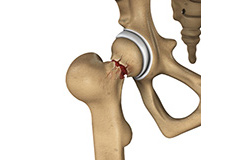
The hip joint is one of the most important and flexible joints in the human body which allows us to walk, run, bend and perform physical activities. It is a ball (femoral head) and socket joint formed between the hip bone and femur (thighbone). It is surrounded by strong muscles and tough ligaments that prevent its dislocation.
Periprosthetic Hip Fractures
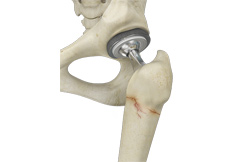
Hip replacement is a surgical procedure in which the damaged cartilage and bone are removed from the hip joint and replaced with artificial components. Any resulting fractures or breaks in the bone around the implant are called periprosthetic hip fractures.
Gluteus Tendon Tear
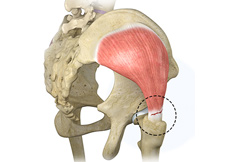
The gluteal muscles (situated in the buttocks) are necessary for the stability and movement of the hip joints. The tendons of two gluteal muscles (gluteus medius and gluteal minimus) are attached at the outer hip region and are often called the “rotator cuff of the hip.
Hip Pain

Hip pain, one of the common complaints, may not always be felt precisely over the hip joint rather in and around the hip joint. The cause for pain is multifactorial and the exact position of your hip pain suggests the probable cause or underlying condition causing it.
Snapping Hip Syndrome
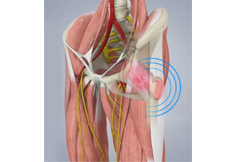
The hip is an important joint that helps us walk, run and jump. The ball-and-socket joint of the hip is formed by the round end of the femur (thighbone) and the cup-shaped socket of the acetabulum (part of the pelvis).
Pelvic Fractures
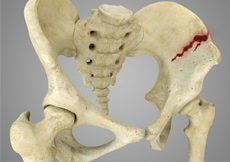
A pelvic fracture is a condition that occurs due to the breakage of the pelvic bone. It may cause damage to the internal organs, nerves and blood vessels associated with the pelvic region.
Hip Bursitis

Hip bursitis is a painful condition caused by the inflammation of a bursa in the hip. Bursae are fluid-filled sacs present in the joints between bone and soft tissue to reduce friction and provide cushioning during movement.
Avascular Necrosis
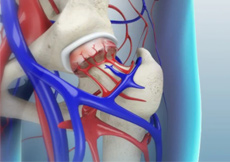
Avascular necrosis, also called osteonecrosis, is a condition in which bone death occurs because of inadequate blood supply to it. Lack of blood flow may occur when there is a fracture in the bone or a joint dislocation that may damage nearby blood vessels.
Hip Fracture

The hip joint is a “ball and socket” joint. The “ball” is the head of the femur or thighbone, and the “socket” is the cup-shaped acetabulum. The joint surface is covered by a smooth articular surface that allows pain-free movement in the joint.
Hip Dislocation

The hip joint is a “ball and socket” joint. The “ball” is the head of the femur or thighbone, and the “socket” is the cup-shaped acetabulum. The joint is surrounded by muscles, ligaments, and tendons that support and hold the bones of the joint in place.
Hip Labral Tear

The hip joint is a ball and socket joint in which the head of the femur is the ball and the acetabulum forms the socket. The labrum helps to deepen the socket and provide stability to the joint. It also acts as a cushion and enables smooth movement of the joint.
Hip Groin Disorders
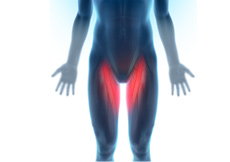
Hip and groin disorders are more common in athletes. They are caused by rapid acceleration and deceleration motion.
Subtrochanteric Hip Fracture
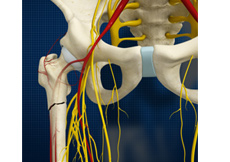
A hip fracture is a break that occurs near the hip in the upper part of the femur or thighbone. The thighbone has two bony processes on the upper part - the greater and lesser trochanters. The lesser trochanter projects from the base of the femoral neck on the back of the thighbone.
Hip Abductor Tears
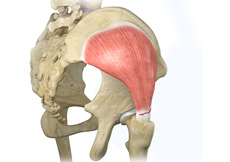
Hip abductors are a major group of muscles found in the buttocks. It includes the gluteus maximus, gluteus medius, gluteus minimus, and tensor fascia lata muscles.
Hip Synovitis
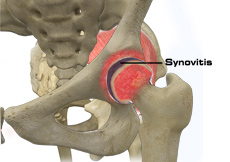
Hip synovitis, also called transient hip synovitis or toxic synovitis, is a condition characterized by inflammation of the synovial tissues that surround the hip joint. It is the most common cause for sudden hip pain that occurs in young children between the age of 2 and 9.
Irritable Hip
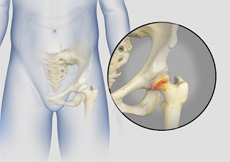
Irritable hip, also known as acute transient synovitis, is a common disorder of childhood characterized by hip pain and limping. The term transient means that it does not last long. It usually occurs before puberty and affects only one hip. Boys aged between 4 to 10 years are most often affected.
Hip Tendonitis
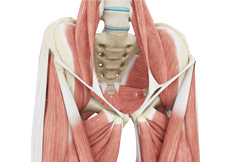
Tendons are strong connective tissue structures that connect muscle to bone. Hip tendonitis is a condition associated with degeneration of the hip tendons. This condition is mainly caused due to strain on the tendons which may occur due to overuse or biomechanical problems.
Hip Pointer
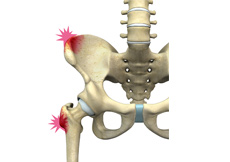
The hip joint consists of the femur (thighbone) and pelvic bone, which is made up of the fusion of three bones – the ischium, pubis, and ilium. The femur has two boney prominences close to the hip joint – the greater and lesser trochanters.
Transient Osteoporosis of the Hip
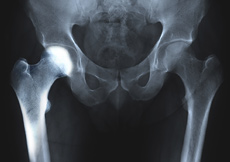
The hip joint is a ball-and-socket joint. A part of the pelvis bone known as the acetabulum forms the socket and the upper end of the femur, known as the femoral head, forms the ball.
Osteoarthritis of the Hip
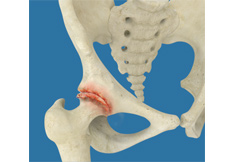
Osteoarthritis, also called degenerative joint disease, is the most common form of arthritis. It occurs most often in the elderly. This disease affects the tissue covering the ends of bones in a joint called cartilage.
Inflammatory Arthritis of the Hip
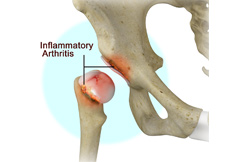
The inflammation of the joints is referred to as arthritis. Inflammation arises when the smooth lining called cartilage at the ends of bones wears away. In some cases, the inflammation is caused when the lining of the joint becomes inflamed as part of an underlying systemic disease. These conditions are referred to as inflammatory arthritis.
Groin Injuries in Athletes
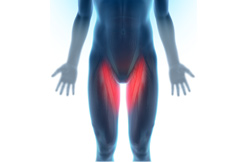
Groin injuries are injuries sustained by athletes during sports activity. Groin injuries comprise about 2 to 5 percent of all sports injuries. The most common kind of groin injury is a groin strain or a pulled groin muscle.
Hip Osteonecrosis
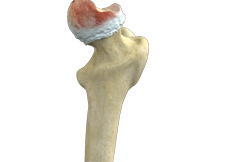
Hip osteonecrosis occurs due to disruption of the blood supply to the highest part of the thigh bone (femoral head). Due to lack of nourishment, the bone tissue of the femoral head dies and gradually collapses, which may further lead to degeneration of the underlying cartilage.
Periprosthetic Hip Infection
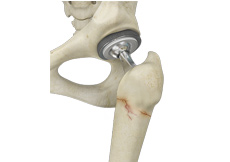
The hip joint consists of the femur (thighbone) and pelvic bone, which is made up of the fusion of three bones – the ischium, pubis, and ilium. The femur has two boney prominences close to the hip joint – the greater and lesser trochanters.
Hamstring Injuries
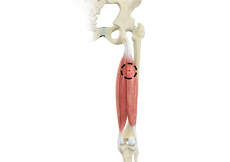
The hamstring is a group of three muscles that run along the back of the thigh from the hip to the knee. Hamstring injuries occur when these muscles are strained or pulled. They are common in dancers and athletes of all sorts including runners and those who play football, soccer, basketball, tennis, etc.
